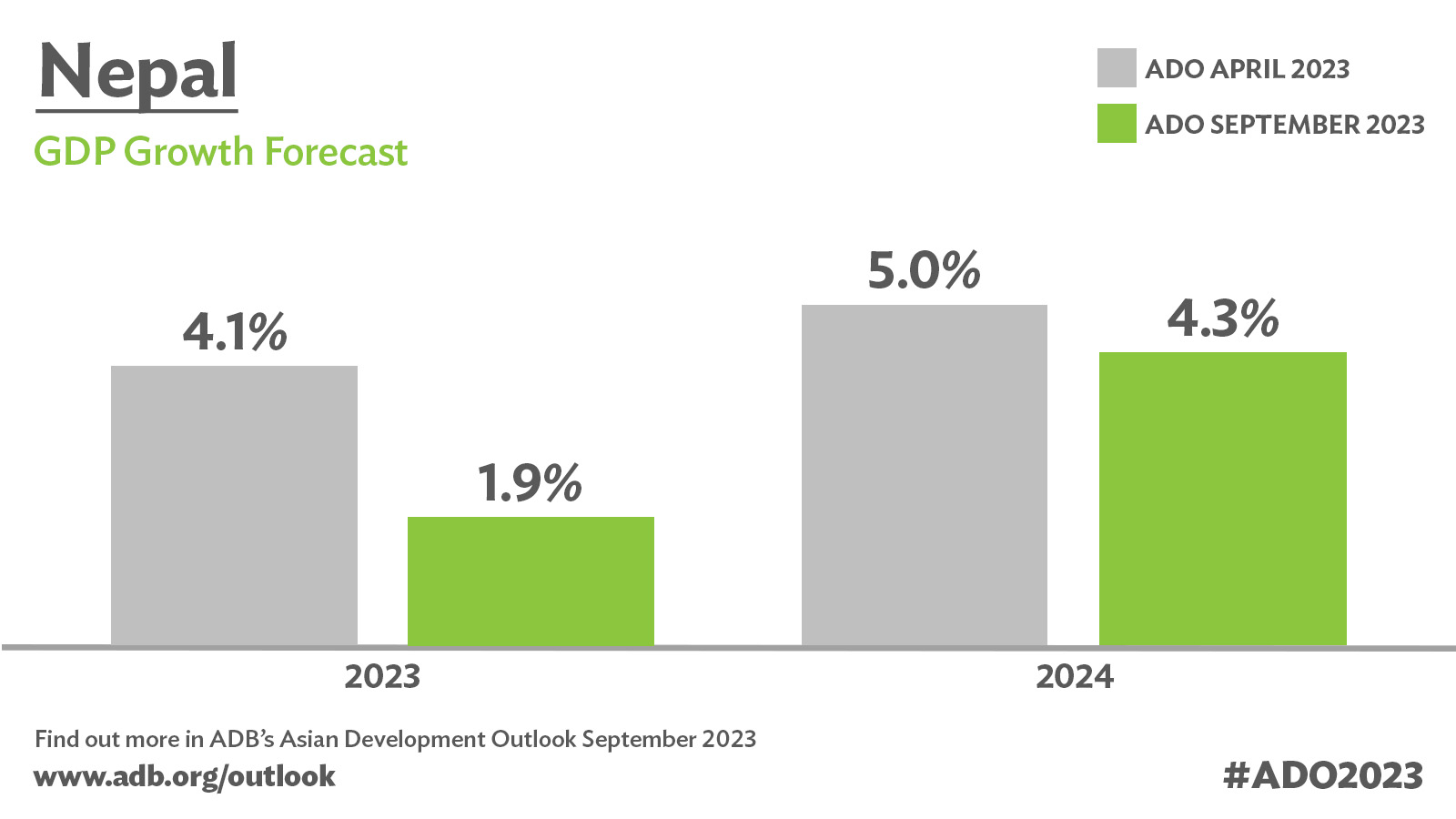KATHMANDU: The Asian Development Outlook (ADO) September 2023, the latest release from the Asian Development Bank (ADB), forecasts Nepal’s economy to experience a robust growth of 4.3% at market prices in fiscal year (FY) 2024.
This marks a significant improvement from the estimated growth rate of 1.9% in FY2023.
To support this positive economic trajectory, the Nepal Rastra Bank (NRB) has adjusted its monetary policy stance.
The Central Bank (NRB) has reduced the policy rate by 50 basis points to 6.5%, a move expected to lead to decreased commercial interest rates and stimulate economic activities. The services sector is expected to thrive, with expansions in real estate, wholesale and retail trade, as well as accommodation and food services. However, agricultural growth may face headwinds due to insufficient rainfall in June and erratic weather patterns, compounded by a lumpy skin outbreak in cattle.
The ADO report projects a decline in annual average inflation, from 7.7% in FY2023 to 6.2% in FY2024. This reduction is attributed to subdued oil price increases and a decrease in inflation rates in India, which is Nepal’s primary source of imports.
ADB Principal Economist for Nepal, Jan Hansen, noted, “Fiscal challenges persist despite some progress in restoring price and external sector stability. While the estimated fiscal deficit for FY2024 is moderate at 2.4% of GDP, significantly lower than the 6.1% deficit in FY2023, the actual deficit could exceed expectations if the government fails to meet its ambitious revenue target for FY2024.”
External risks remain relatively manageable, with foreign exchange reserves expected to meet at least 7 months of imports. The current account deficit is projected to widen to 1.8% of GDP in FY2024, driven by stable remittances and increased imports as economic growth accelerates.
However, downside risks to the FY2024 economic outlook may emerge if authorities implement more contractionary economic policies to curb inflation in the face of geopolitical tensions. Such measures could dampen consumption, disrupt domestic production, and negatively impact overall growth.









Comment